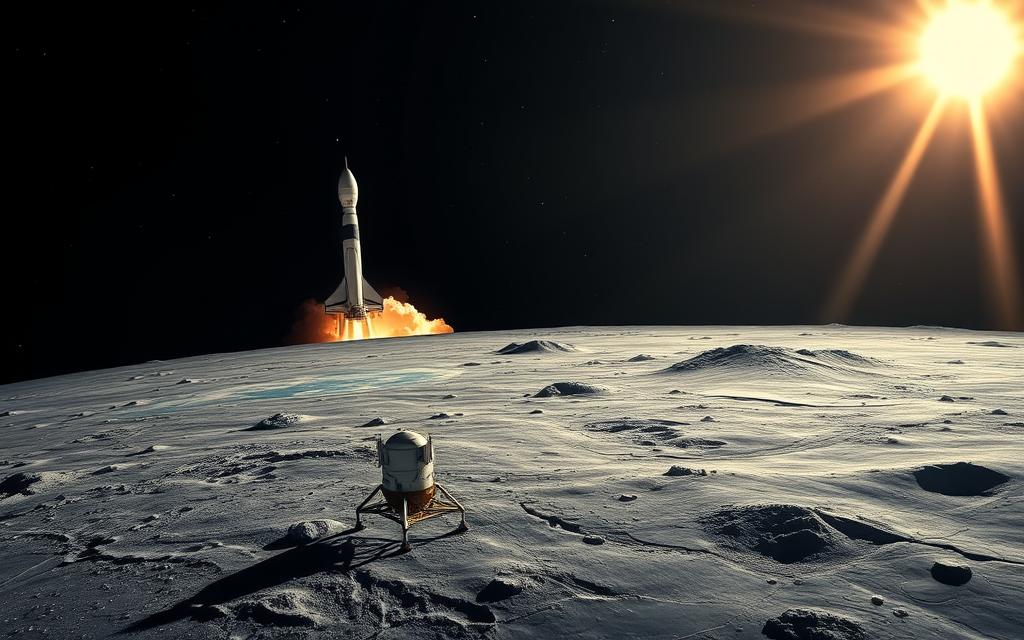In 2009, the Apollo 14 capsule was displayed at the Kennedy Space Center, a tangible reminder of humanity’s lunar achievements. This artifact symbolizes a time when astronauts ventured into the unknown, pushing the boundaries of science and exploration. Yet, a puzzling question lingers: Why does this 1969 feat seem so difficult to replicate today?
Robert Frost, a NASA flight controller, offers an analogy. Building a spacecraft is like crafting a modern car or airplane. It’s not just about the parts but the expertise, infrastructure, and teamwork behind it. The Apollo program involved millions of components and a dedicated workforce, many of whom have since retired or moved on.
Today, the Artemis program aims to return humans to the moon. However, challenges like obsolete materials and dispersed knowledge raise questions. Is this a case of “lost technology,” or is it simply the natural evolution of space exploration? This article seeks to provide an answer, separating fact from fiction.
Introduction: The Myth of Lost Moon Technology
Recent lunar landing attempts have sparked debates about humanity’s ability to return to the moon. While the Apollo program achieved six successful landings, modern missions face a 50% failure rate. In 2023 alone, Russia’s Luna 25 crashed, Japan’s Hakuto-R encountered a software glitch, and the US’s Peregrine suffered a fuel leak. These setbacks have fueled skepticism and conspiracy theories about “lost technology.”
India’s Chandrayaan-3, however, stands as a counterpoint. With a budget of just $72 million—less than many Hollywood films—it successfully landed on the moon in 2023. This achievement highlights the evolving capabilities of space programs worldwide. Yet, the contrast between Apollo’s “routine” landings and today’s struggles raises questions.
Scott Pace, director of the George Washington University Space Policy Institute, notes, “Organizational knowledge decays over time.” The Apollo era’s 4% federal budget allocation has dwindled to 0.4%, and critical infrastructure like Saturn V molds was dismantled. Ars Technica’s report on reconstructing the F-1 engine underscores the challenges of reviving old spacecraft designs.
“Is this a case of lost technology, or is it a reset in progress?”
As we prepare for the Artemis program, the question remains: Are we rebuilding what was lost, or are we creating something entirely new? The answer lies in understanding the complexities of both past and present launch systems.
Why Did NASA “Lose” the Technology to Go to the Moon?
The Apollo era marked a pinnacle in human space exploration, but its legacy raises questions about continuity. The abrupt end of the program in 1972 left a gap in knowledge and infrastructure. This section explores the factors behind this perceived loss.
The End of the Apollo Program
When the Apollo program was canceled, there was no clear transition plan. Factories that once produced Saturn V rockets were repurposed for Skylab workshops. This shift left no dedicated place for lunar mission infrastructure.
Many skilled workers migrated to military and aerospace projects. Hank Pernicka of Missouri S&T notes, “Museums received functional hardware, but preserving operational knowledge was overlooked.” This dispersal of expertise created a void.

Technological Obsolescence
Advancements in technology rendered Apollo-era systems outdated. Modern spacecraft rely on materials and methods that differ significantly from those used in the 1960s. Rebuilding old designs would require extensive retooling.
For example, the 2022 SLS rocket uses repurposed shuttle parts, highlighting the challenges of adapting old systems. This obsolescence makes it impractical to replicate Apollo missions exactly.
The Shift in NASA’s Priorities
Funding for space exploration has shifted over the years. The Apollo era received 4% of the federal budget, while today’s allocation is just 0.4%. This reduction has impacted long-term projects like lunar exploration.
NASA’s CLPS program now funds private lunar attempts, reflecting a new approach. While this fosters innovation, it also means less focus on preserving past knowledge.
| Aspect | Apollo Era | Modern Era |
|---|---|---|
| Budget Allocation | 4% of federal budget | 0.4% of federal budget |
| Workforce | Dedicated teams | Dispersed expertise |
| Technology | Custom-built systems | Repurposed components |
“Preserving operational knowledge was overlooked, creating a void in expertise.”
As we look to the future, understanding these challenges is crucial. The Artemis program aims to build on past achievements while addressing these gaps. The journey back to the moon is not just about rediscovery but also innovation.
The Challenges of Recreating Apollo-Era Technology
Recreating the Apollo-era achievements today involves navigating a maze of technical and logistical hurdles. The Saturn V rocket, a marvel of its time, was a product of meticulous engineering and a vast workforce. Modern attempts to replicate its success face unique challenges, from outdated designs to dispersed expertise.
Complexity of the Saturn V Rocket
The Saturn V was a behemoth, with over 3 million parts working in harmony. Its S-IC thrust structure and J-2 engine clusters were engineering feats. During launch, the “umbilical” disconnect process was critical yet fraught with risks. Today, digitizing 8.5 million pages of analog schematics is a monumental task.
Workforce size also plays a role. The Apollo program employed 400,000 contractors, while the Artemis project operates with just 20,000 staff. This stark difference highlights the challenge of scaling expertise for modern missions.
Modern Materials and Expertise
Advancements in technology have rendered many Apollo-era materials obsolete. Modern spacecraft rely on lighter, more durable components. However, this shift means that old designs must be adapted or entirely reimagined.
For example, reconstructing the F-1 engine required extensive retooling. The Artemis program’s SLS rocket repurposes shuttle components, showcasing the difficulty of reviving outdated systems.
The Cost of Rebuilding
Budget constraints add another layer of complexity. The Apollo program received 4% of the federal budget, while today’s allocation is just 0.4%. This reduction impacts long-term projects like lunar exploration.
For instance, Intuitive Machines’ 2024 Odysseus lander had a budget of $100 million. In contrast, the 1966 Surveyor 1 mission cost significantly less, adjusted for inflation. As recent reports highlight, modern missions often operate “on pocket change” compared to historical spending.
“Rebuilding the technology used in the 1960s requires more than just blueprints and materials.”
As we look to the future, the journey back to the moon is not just about rediscovery but also innovation. The Artemis program aims to build on past achievements while addressing these gaps, ensuring that the next chapter in space exploration is as groundbreaking as the first.
Conclusion: The Future of Lunar Exploration
The future of lunar exploration is shaped by innovation and global collaboration. The Artemis program aims to return astronauts to the moon by 2026, focusing on sustainability and long-term presence. Unlike the Apollo era, today’s missions leverage advanced technology and private sector partnerships, such as SpaceX’s Starship and Blue Origin’s Blue Moon.
International competition is also driving progress. China’s Chang’e-6 mission and plans for a lunar base by 2030 highlight the global race for lunar resources. Meanwhile, NASA’s Lunar Gateway station will serve as a hub for space exploration, enabling deeper science and flight capabilities.
Workforce development and materials innovation are key. NASA’s Moon to Mars Architecture workshops and experiments with lunar regolith-based 3D printing are paving the way for sustainable spacecraft and habitats. Autonomous landing systems and AI are also transforming how we approach lunar missions.
As Matt Siegler of PSI notes, public engagement remains crucial. The 2024 Odysseus landing at Malapert A crater, rich in water ice, underscores the potential for resource utilization. This is not about “lost” technology but evolving paradigms in exploration.
With new rocket designs, international partnerships, and cutting-edge science, the next chapter of lunar exploration promises to be as groundbreaking as the first.







